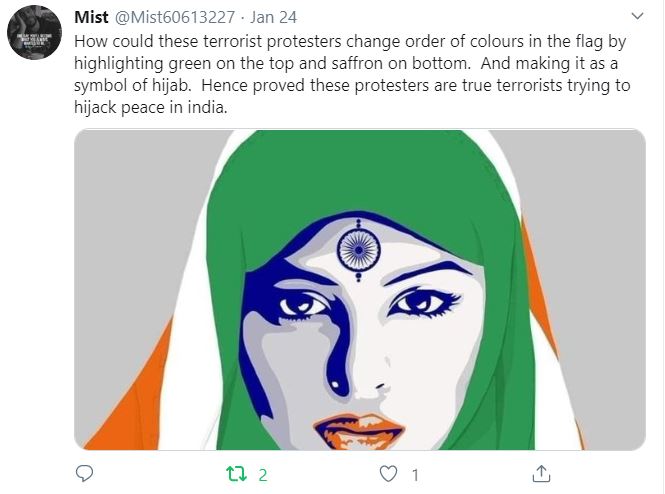India’s budget can often be an arcane exercise, encompassing a plethora of documents that lays out the revenue and expenditure of the Centre for a three-year-period. For instance, Budget 2020 will provide the actual estimates for FY’19, revised estimates for FY’20 and budget estimates for FY’21.
With the sheer amount of data and detail available across various sub-documents of the Budget, understanding the intricacies and convoluted structure can become a chore. To add to this, the budget speech, given by the finance minister of the day, is often a long monologue designed to focus on achievements rather than dispensing key facts.
To make things simpler, following is a list of some key elements which one can look at to get a macro sense of the entire document. This is not an exhaustive list and does not cover any sector-specific wish-lists or probable announcements.
Balancing the ‘deficit’ math
There are four deficit numbers i.e revenue deficit, effective revenue deficit, fiscal deficit and primary deficit, which are detailed in the “Budget at a glance” document. Each of these numbers is represented as a percentage (%) of India’s GDP (in nominal prices). Within these four, the most crucial number which everyone monitors is the fiscal deficit (FD) as a % of GDP.
The government had budgeted FD at 3.3% of GDP in the July budget but subsequent to first advance estimate of GDP, this was automatically revised upward to 3.44%. Given the requirement of higher spending and subdued revenue collections, the FD could be higher at around 3.8-4% for both FY’20 and FY’21.
Higher the fiscal deficit means higher market borrowings, which in turn means lower funds available for the private sector to borrow. The current weakness in government’s revenue and likely higher expenditure to address the slowdown in the domestic economy will widen the fiscal deficit. It will be important to monitor this number for both FY20(RE) and FY21(BE) and also look at the “medium term fiscal policy” to understand the fiscal consolidation framework going ahead.
‘Financing’ the deficit
There are a few sources to finance the fiscal deficit, chiefly of which is “market borrowings”. Details of both gross and net (amount after repayment of borrowings) are provided but while looking at financing the deficit, we always look at net borrowings. Gross and net market borrowings were budgeted at Rs 7 lakh crore and Rs 4.5 lakh crore respectively. Both these till mid-January, 2020 have been almost 95% of the budgeted number.
Also read: India Deserves a More Comprehensive Budget Process
Given the significant utilisation of market borrowings, the Modi government will resort to two other sources to finance the deficit: “securities against small savings” and “drawing down of cash balances”, both of which have recently seen an increase. These two components will also have to be watched as higher this number; lower will be net market borrowings.
‘Tax revenue’ vs ‘GDP’ growth
The growth in tax revenue needs to be looked at in reference to growth in nominal GDP. In the previous budget, tax revenue was budgeted to grow by 11.1% while the nominal GDP growth was estimated at 12%. However, so far between April-November, tax revenue growth has been notably lower at 2.6% while the nominal GDP growth as per FY20 (AE) is at 7.5%.
Lingering bottlenecks in GST collections coupled with corporate tax cut would make it difficult to project a significant jump in tax revenue. Higher tax revenue growth would mean lower deficit but the credibility of the number would depend a lot on forecasting both these numbers.
Capital expenditure for infrastructure
Capital expenditure of Rs 3.38 lakh crore accounts for only 12% of the budget size and within capital expenditure, defence, railways and road transport accounts for 3/4th of total capital expenditure. It has grown at CAGR 7.6% in the past 4 years and was budgeted to growth by 7% in FY20.

Any potential shortfall in GST revenues will have an impact on government spending, which in turns has implications for India’s economic growth. Photo: Reuters
So far, the government has spent almost 65% of its budgeted target and is in line with the corresponding period a year ago. With the announcement of the National Infrastructure Pipeline, there could be a spike in this number as 39% of the infrastructure spending has to be incurred by the Central government (including public sector undertakings). Higher growth in capital spending is important as it has backward linkages, multiplier effects and support investment led consumption.
‘Outside the Budget’ borrowings
Technically referred to as “Internal and Extra Budgetary resources”, these are the different ways in which the government PSUs will raise funds to fund infrastructure spending. Internal sources of the company, external commercial borrowings (ECBs) and bonds are the various sources of off-budget borrowings. This amount is higher than the gross budgetary support for capital expenditure. To curtail the widening of the fiscal deficit, outside the budget spending of capital expenditure could be higher.
Rise in tax slabs or deductions
Just prior to every budget, every wish-list has either raising the income tax slab or higher deductions to benefit the individual tax payers. In the previous Interim Budget, a rebate of Rs 12,500 was provided to individuals having taxable income up to Rs 5 lakhs. Income tax which accounts for 16% of total revenue is an important revenue source but announcement of either of the above two favourite wish-list items would weigh on the top-line.
Also watch | Budget 2020: How Can Nirmala Sitharaman Make it Count?
Despite this, increase in one of the popular income tax deductions like 80C (from current Rs 1.5 lakhs), standard deductions (from current Rs 50,000) or deduction on interest paid on housing loans can be watched out for. Not all, but one of these 3 could be on the cards.
Targeting ‘disinvestments’
One of the popular “capital receipts” is “disinvestment” which in recent years has been budgeted for more than Rs 1 lakh. However, so far this year the number has be around Rs 18,000 crore till December.
The government had approved strategic disinvestment of five CPSUs including two key entities namely BPCL and CCIL. Budgeting this number again at Rs 1 lakh crores for FY21 would be achieving almost Rs 1.5 lakh crores in one year. The details in achieving the target would be the imperative component of the disinvestment target.
Market sentiment announcements
The stock markets have been seen an uptick in recent days hopeful of reforms in the Budget to drive the economy. However, market enthusiasts are even more hopeful of announcements like abolishing of long term capital gains tax on equity shares (currently at 10% for LTCG more than Rs 1 lakhs) or no tax on dividends in the hands of individuals (currently 10% on dividend income above Rs 10 lakhs), which could further buoy the markets.
Schemes for the welfare of people
Out of the total budget size of around Rs 27 lakh crore, schemes for the welfare of the people (clubbed under centrally sponsored schemes and central sector schemes) account for almost 45% of the total expenditure.
Also read: India’s Growth Slump has Uniquely Domestic Causes. Modi’s Budget Must Address That.
Given the current economic slowdown on account of consumption deceleration means that higher spending towards various schemes is critical. Balancing this with the fiscal deficit target in the backdrop will be crucial.
‘GST’ numbers and compliance
Following the implementation of GST, it accounts for almost one-fifth of total government revenue. Though GST rate cuts are something which comes under the ambit of the GST council, the collection under this head will be looked at closely.
The states, which are supposed to be compensated for the revenue loss for switching to GST and are currently protesting for lower transfers from Centre will look at both budgeted collections and transfers. The ease of GST compliance and refunds to exporters are key ingredients in the regime, cues of which everyone would look at.
The Budget exercise is a lengthy process involving a number of consultations, rent-seeking and comprehensive budgeting and balancing of the entire fiscal math on which a number of other variables are dependent. This time around, with other engines of the economy slowing down, hopes are pinned on the government to continue supporting the economy.
Sushant Hede is an Associate Economist at CARE Ratings. Views expressed here are personal.















